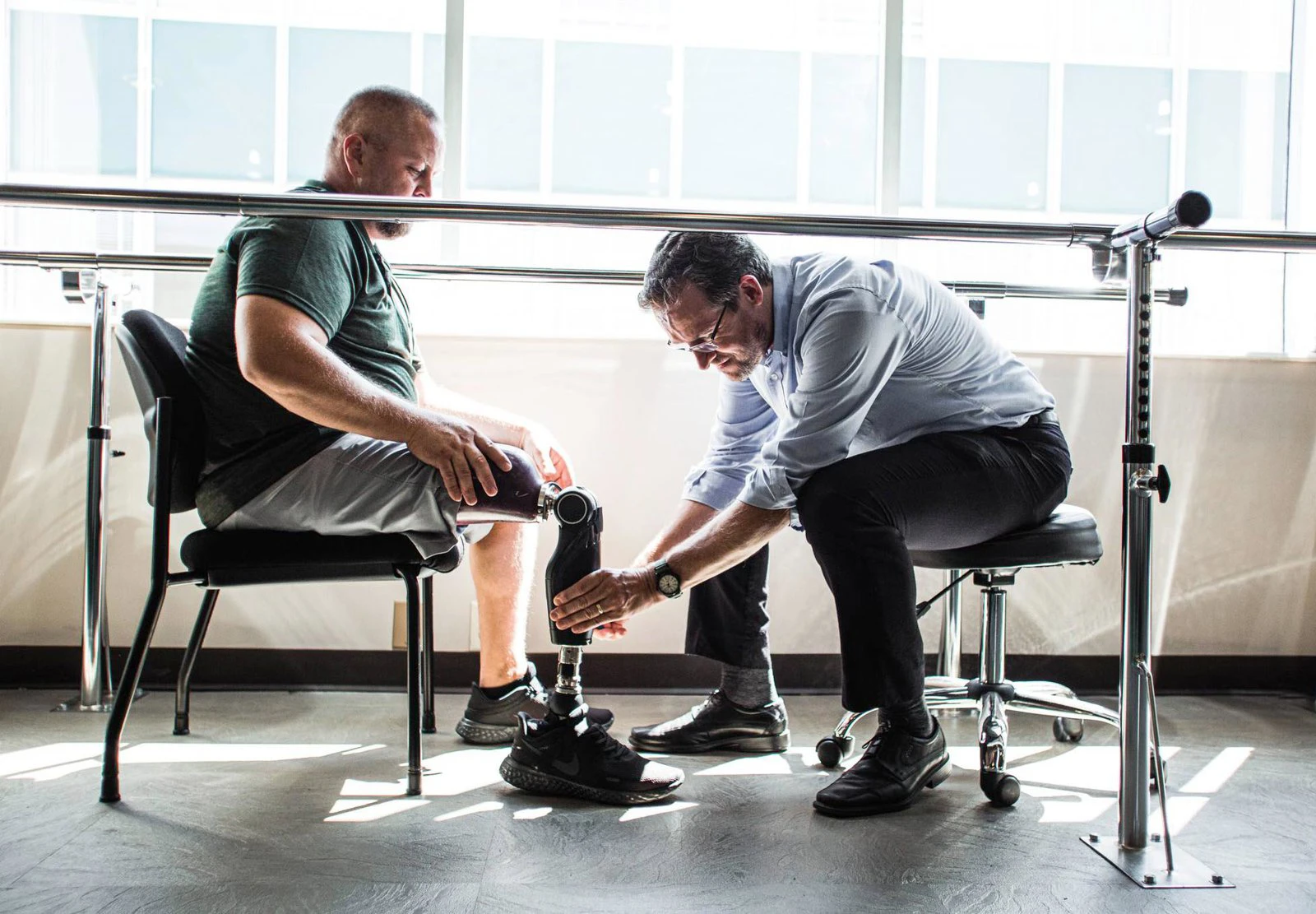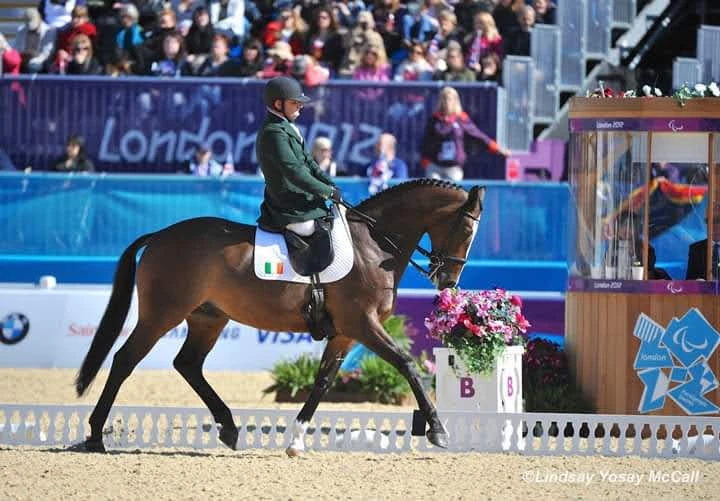Trans-femoral leg prosthesis
A Trans-Femoral leg prosthesis is an artificial leg or upper leg prosthesis for people with a leg amputation through the femur, the thigh bone between the hip and knee. The prosthesis replaces the missing part of the leg and consists of a prosthetic socket (or osseointegration socket), a knee joint, a lower leg module and a prosthetic foot.
The Amputee Care Center designs customised trans-femoral leg prostheses to support your natural walking movement or to perform special top-level sports.
The prosthetic components used for this purpose depend on your needs and can range from simple mechanical systems to advanced 3D printed sleeves, computer-controlled knee replacements and prosthetic feet with a lightweight lower leg module. A well-fitting trans-femoral prosthesis, tailored to your activities, helps with mobility and comfort so you can live the life you need.
Knee ex-articulation leg prosthesis
A knee ex-articulation leg prosthesis (disarticulation leg prosthesis) is used after amputation through the knee joint, with the upper leg completely preserved.
Because the thigh muscles are largely preserved after a knee exarticulation amputation, you do not lose strength in your stump and can therefore control your prosthesis very well.
A challenge for the prosthetist is the placement of the prosthetic knee. The prosthetic knee adds extra length. This makes it necessary to address the symmetry and leg length difference that a knee ex-articulation leg prosthesis creates.
A symmetrical gait pattern is essential in a knee ex-articulation prosthesis to protect the healthy side from muscle strain and premature wear. At the Amputee Care Centre, the prosthetist will analyse your gait pattern using a digital analysis. Prosthetists who have had a leg prosthesis made elsewhere and would like a second opinion are also welcome to visit us.
Hip exarticulation leg prosthesis
A hip ex-articulation leg prosthesis (hip disarticulation prosthesis) is used in people who have undergone an amputation at or above the hip joint. The control of a hip ex-articulation leg prosthesis is completely controlled by your pelvis. This special situation means that making a well-fitting pelvic belt or pelvic harness is an absolute specialisation. This requires a high level of expertise from the orthopaedic instrument maker or prosthetist.
The prosthesis wearer (user) and prosthesis maker (designer) work closely together. Our goal is to strive for maximum motion control, stability and wearing comfort:
- A well-fitting pelvic belt or socket provides stability and prevents pressure points. Lightweight and breathable materials increase your wearing comfort during prolonged use.
- A lightweight prosthesis with a good centre of gravity prevents strain on your back and healthy leg. Hip joint, knee joint and prosthetic foot must be well matched for smooth and stable walking.
- Mechanical leg prosthetic joints are robust, while advanced systems such as hydraulic or microprocessor-controlled MCK and MPKs allow for more natural movements.
- Good shock absorption and optimal rotational function increase your comfort and reduce strain while walking.
Count on an acceptance period, lots of practice and repeated adjustments. Learning to use a first hip exarticulation prosthesis requires patience and perseverance to learn to use it optimally. Get support in this from the specialised prosthetists of the Amputee Care Center team. Prosthesis wearers who have had a hip ex-prosthesis made elsewhere and would like a second opinion are welcome to visit us for a free consultation with gait analysis.








